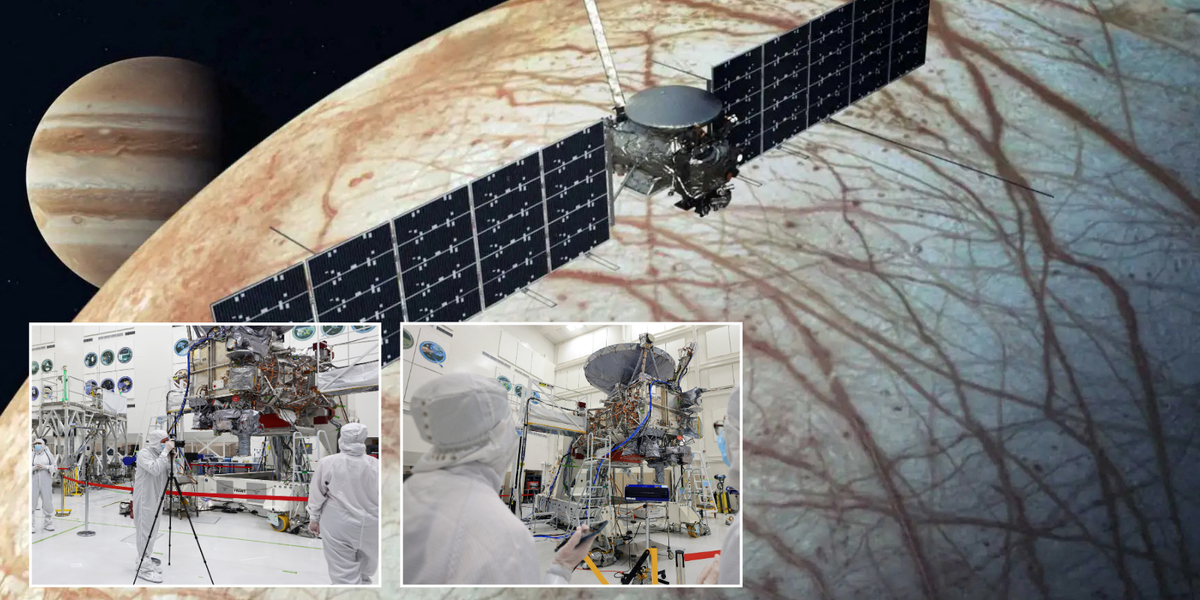NASA’s Europa Clipper Mission: A Journey to Uncover the Secrets of Jupiter’s Ocean Moon
NASA is on the brink of a groundbreaking mission that could reshape our understanding of life beyond Earth. The Europa Clipper spacecraft is set to launch from the Kennedy Space Center in Florida, embarking on a journey of over 628 million kilometers to explore Europa, one of Jupiter’s 95 moons. This ambitious $5 billion mission aims to investigate whether the conditions on Europa could support extraterrestrial life, making it one of the most exciting endeavors in planetary science.
The Significance of Europa
Europa has long captured the imagination of scientists and astronomers alike. Beneath its icy surface lies a vast ocean that may contain more water than all of Earth’s oceans combined. This intriguing characteristic has led researchers to consider Europa as a potential habitat for life. “As an ocean world, Europa is very intriguing,” said Gina DiBraccio, acting director of NASA’s planetary science division. “This mission is going to help us to understand a complex piece of our solar system.”
The mission is not primarily focused on finding life itself but rather on determining whether the conditions necessary for life exist on Europa. “There is very strong evidence that the ingredients for life exist on Europa. But we have to go there to find out,” stated Bonnie Buratti, the mission’s deputy project scientist. The findings from this mission could have profound implications for our understanding of life’s origins and its potential existence elsewhere in the universe.
The Journey Ahead
The Europa Clipper spacecraft is scheduled to launch at 12:06 PM local time, and the journey will take over five years, with an expected arrival at Europa in 2030. The spacecraft will utilize a gravity-assist maneuver, flying past Mars and swinging back around Earth to gain momentum, much like a slingshot. This innovative approach allows the spacecraft to conserve fuel and maximize its reach into the outer solar system.
The Clipper is the largest spacecraft ever built by NASA for a planetary mission, measuring over 100 feet from end to end. Its size is primarily due to its extensive solar panels, which are essential for generating power in the distant reaches of the solar system. The mission was briefly delayed due to Hurricane Milton, which impacted the launch schedule in Florida.
Scientific Instruments and Objectives
Equipped with nine scientific instruments, the Europa Clipper will conduct a comprehensive analysis of the moon’s surface and subsurface. The spacecraft will search for traces of organic compounds and gases released from the moon, aiming to assess whether Europa is habitable. “It’s a chance for us to explore not a world that might have been habitable billions of years ago, but a world that might be habitable today — right now,” remarked Curt Niebur, a program scientist.
The mission’s scientific instruments will allow researchers to study Europa’s icy crust, analyze its composition, and investigate the potential for hydrothermal activity on the ocean floor. These factors are crucial in determining whether the moon has the necessary conditions for life.
A Legacy of Exploration
The interest in Europa is not new; it has been the subject of study for decades. The first hints of its potential habitability emerged in the 1970s when scientists observed water ice through telescopes. Subsequent missions, including the Voyager 1 and 2 spacecraft, provided the first close-up images of Europa, revealing its cracked surface, which scientists believe may contain salts and sulfur compounds that could support life.
In 1995, NASA’s Galileo spacecraft further advanced our understanding of Europa, capturing images that showcased its unique geological features. More recently, the James Webb Space Telescope has provided stunning visuals of giant plumes of water being ejected from the moon’s surface, adding to the growing body of evidence that Europa is an ocean world.
The Broader Implications
The implications of discovering life on Europa would be monumental. “If we discover life so far away from the Sun, it would imply a separate origin of life to the Earth,” explained Mark Fox-Powell, a planetary microbiologist at the Open University. “That is hugely significant, because if that happens twice in our solar system, it could mean life is really common.” Such a finding would not only enhance our understanding of life’s potential in the universe but also challenge our perceptions of what constitutes a habitable environment.
Conclusion
As the Europa Clipper prepares for its historic launch, the scientific community and space enthusiasts around the world eagerly await the discoveries that lie ahead. This mission represents a significant step in our quest to understand the cosmos and the potential for life beyond our planet. With Europa as its destination, the Clipper is poised to unlock the mysteries of this ocean moon, paving the way for future exploration and perhaps, one day, the discovery of life beyond Earth.
